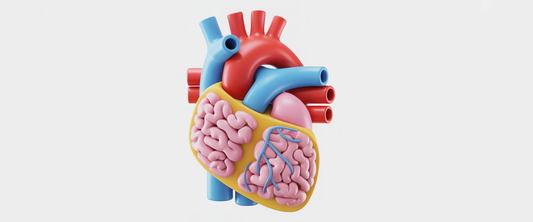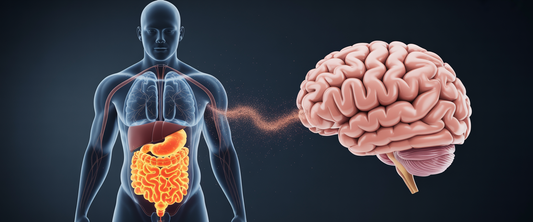Want to reduce your mortality risk? New science says start taking brisk walks

The quest for longevity doesn't always require expensive supplements or complex interventions—sometimes the most powerful health strategies are hiding in plain sight. Recent research published in the American Journal of Preventive Medicine has revealed compelling evidence that something as simple as adjusting your walking pace could significantly impact your lifespan and overall health outcomes.
This groundbreaking study, which analyzed data from nearly 80,000 participants in the Southern Community Cohort Study, provides fresh insights into how walking speed influences mortality risk across diverse populations. The findings suggest that while any walking provides health benefits, the pace at which you walk may be a crucial factor in maximizing those longevity-supporting effects.
For health-conscious individuals seeking evidence-based strategies to support healthy aging and cardiovascular health, understanding the relationship between walking intensity and health outcomes offers a practical, accessible approach to longevity optimization. The research reveals specific patterns that can help you structure your daily movement for maximum benefit.
5 Key Findings About Walking Speed and Longevity
1. Short Bursts of Brisk Walking Provide Significant Mortality Benefits
The study's most striking finding revealed that short bursts of brisk daily walking were associated with a remarkable 20% reduction in mortality risk. This suggests that you don't need hours of exercise to support longevity—focused, higher-intensity walking sessions may help optimize health outcomes more efficiently than previously understood.
Implementation approach: Incorporate 10-15 minute sessions of brisk walking into your daily routine, aiming for a pace that elevates your heart rate but still allows conversation. Research indicates this intensity level may help support cardiovascular function and overall health markers associated with longevity.
Scientific context: The 20% mortality reduction represents a substantial health benefit comparable to many pharmaceutical interventions. This finding builds on previous cardiovascular research suggesting that moderate-intensity exercise may help support heart health, blood pressure regulation, and metabolic function—all factors associated with healthy aging and longevity.
2. Fast Walking Specifically Reduces Cardiovascular Mortality Risk
Beyond general mortality benefits, the research demonstrated that fast walking showed particular promise in reducing premature mortality from heart disease. This targeted cardiovascular protection highlights walking's specific mechanisms for supporting heart health and circulatory function.
Implementation approach: Focus on achieving a "brisk" pace during your walks—typically defined as 3.5-4 mph or fast enough that you feel slightly breathless but can maintain the pace comfortably. Monitor your perceived exertion to ensure you're working at an intensity that challenges your cardiovascular system appropriately.
Scientific context: The researchers noted that walking may help enhance heart functioning while supporting healthy blood pressure levels. This cardiovascular-specific benefit aligns with extensive research showing that aerobic exercise supports endothelial function, arterial flexibility, and overall cardiac efficiency—all factors associated with reduced cardiovascular disease risk and improved longevity outcomes.
3. Slower-Paced Walking Still Provides Measurable Health Benefits
While brisk walking showed superior results, the study found that even slower-paced walking for extended periods offered health benefits. Participants who walked at a slower pace for more than three hours daily experienced a 4% reduction in mortality risk, demonstrating that movement at any intensity may support health outcomes.
Implementation approach: If physical limitations or preferences make brisk walking challenging, focus on extending your walking duration rather than intensity. Aim for longer, comfortable-paced walks throughout the day, treating this as a foundation for building more active habits over time.
Scientific context: This finding supports the concept that total movement volume contributes to health outcomes, even when intensity remains moderate. The 4% mortality reduction, while smaller than the brisk walking benefit, still represents a meaningful health improvement and suggests that walking for longevity benefits can be adapted to various fitness levels and physical capabilities.
4. Faster Pace Delivers Health Benefits More Efficiently
The research revealed that walking at a quicker pace provided health benefits more rapidly compared to slower walking, suggesting an efficiency advantage for those with time constraints. This time-benefit relationship offers practical guidance for busy individuals seeking to optimize their exercise routines.
Implementation approach: When time is limited, prioritize intensity over duration. A 15-20 minute brisk walk may provide more substantial health benefits than an hour of casual strolling. Consider incorporating brief, high-intensity walking intervals during lunch breaks or commute times to maximize your time investment.
Scientific context: This efficiency principle aligns with exercise physiology research showing that higher-intensity activities may help stimulate greater physiological adaptations in shorter timeframes. The cardiovascular and metabolic demands of brisk walking may help trigger more pronounced improvements in heart health, blood sugar regulation, and other longevity-associated biomarkers compared to lower-intensity activities.
5. Walking Supports Multiple Longevity-Related Health Markers
Beyond the primary study findings, related research demonstrates that regular walking may help support various health markers associated with longevity and quality of life. Previous studies have shown that individuals who maintained 2.5 hours of brisk walking per week experienced a 25% reduction in depression risk, while short walks after meals helped support healthy blood sugar and insulin levels.
Implementation approach: Consider walking as a multi-purpose health intervention rather than just exercise. Take brief walks after meals to support metabolic health, use walking as a stress management tool, and incorporate social walking activities to combine physical activity with mental health benefits.
Scientific context: These additional benefits highlight walking's comprehensive impact on health systems beyond cardiovascular function. Research suggests that regular walking may help support healthy blood pressure levels, glucose metabolism, mood regulation, and cognitive function—all factors that contribute to healthy aging and longevity outcomes.
Implementing Walking for Longevity Benefits
The most practical approach to leveraging these research findings involves starting with your current fitness level and gradually incorporating more brisk walking sessions into your routine. Begin with 10-15 minute brisk walks three times per week, focusing on achieving a pace that feels challenging but sustainable.
Remember that individual responses to exercise interventions can vary significantly based on current fitness level, health status, and genetic factors. While this research provides compelling evidence for walking's longevity benefits, it's important to consult with a healthcare provider before significantly increasing your physical activity, especially if you have existing health conditions or have been sedentary.
The beauty of walking for longevity lies in its accessibility and adaptability—whether you choose brief, intense sessions or longer, moderate-paced walks, the research suggests that consistent movement may help support healthy aging and improved quality of life outcomes.



